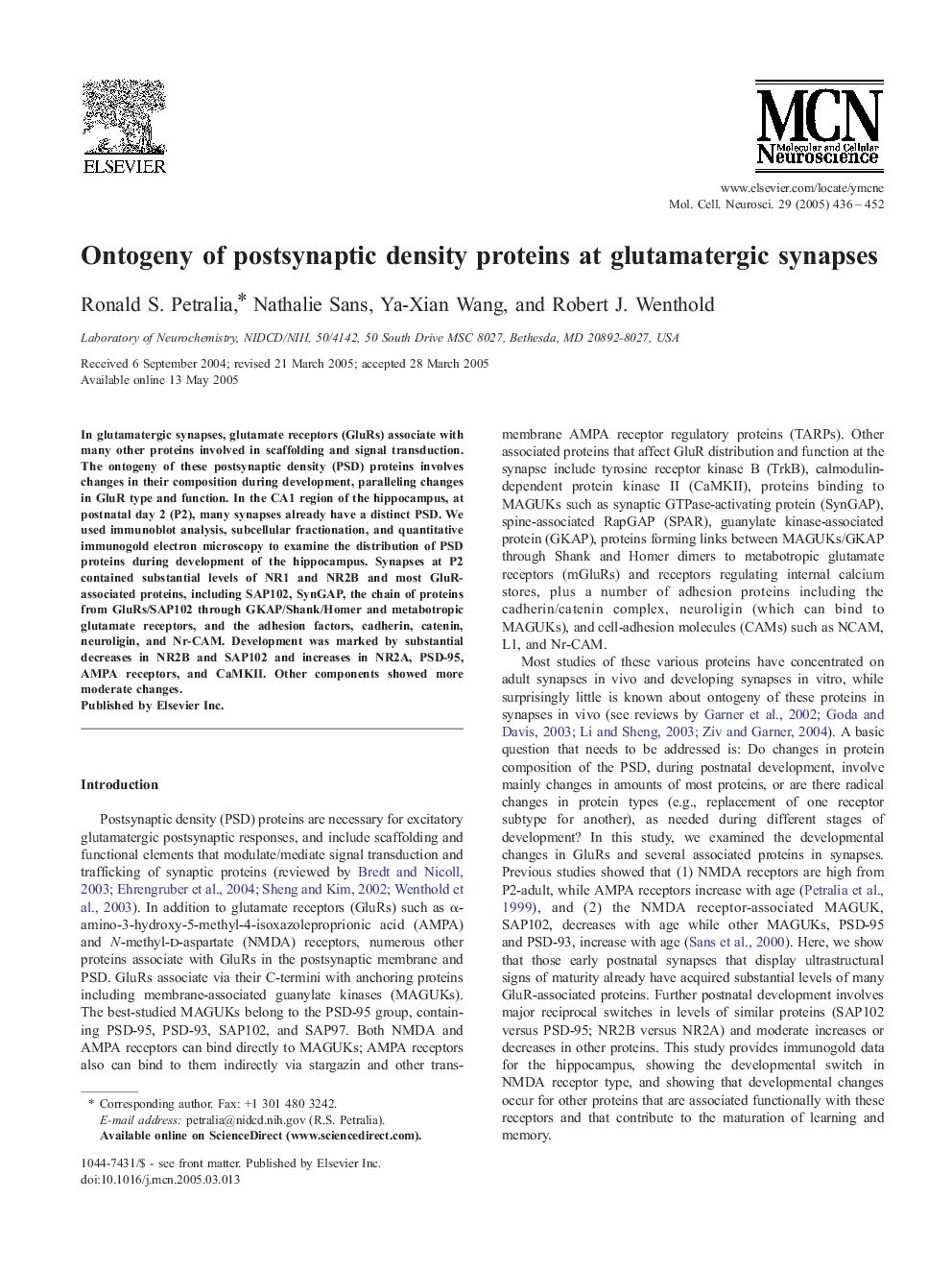| Article ID | Journal | Published Year | Pages | File Type |
|---|---|---|---|---|
| 10956893 | Molecular and Cellular Neuroscience | 2005 | 17 Pages |
Abstract
In glutamatergic synapses, glutamate receptors (GluRs) associate with many other proteins involved in scaffolding and signal transduction. The ontogeny of these postsynaptic density (PSD) proteins involves changes in their composition during development, paralleling changes in GluR type and function. In the CA1 region of the hippocampus, at postnatal day 2 (P2), many synapses already have a distinct PSD. We used immunoblot analysis, subcellular fractionation, and quantitative immunogold electron microscopy to examine the distribution of PSD proteins during development of the hippocampus. Synapses at P2 contained substantial levels of NR1 and NR2B and most GluR-associated proteins, including SAP102, SynGAP, the chain of proteins from GluRs/SAP102 through GKAP/Shank/Homer and metabotropic glutamate receptors, and the adhesion factors, cadherin, catenin, neuroligin, and Nr-CAM. Development was marked by substantial decreases in NR2B and SAP102 and increases in NR2A, PSD-95, AMPA receptors, and CaMKII. Other components showed more moderate changes.
Related Topics
Life Sciences
Biochemistry, Genetics and Molecular Biology
Cell Biology
Authors
Ronald S. Petralia, Nathalie Sans, Ya-Xian Wang, Robert J. Wenthold,
